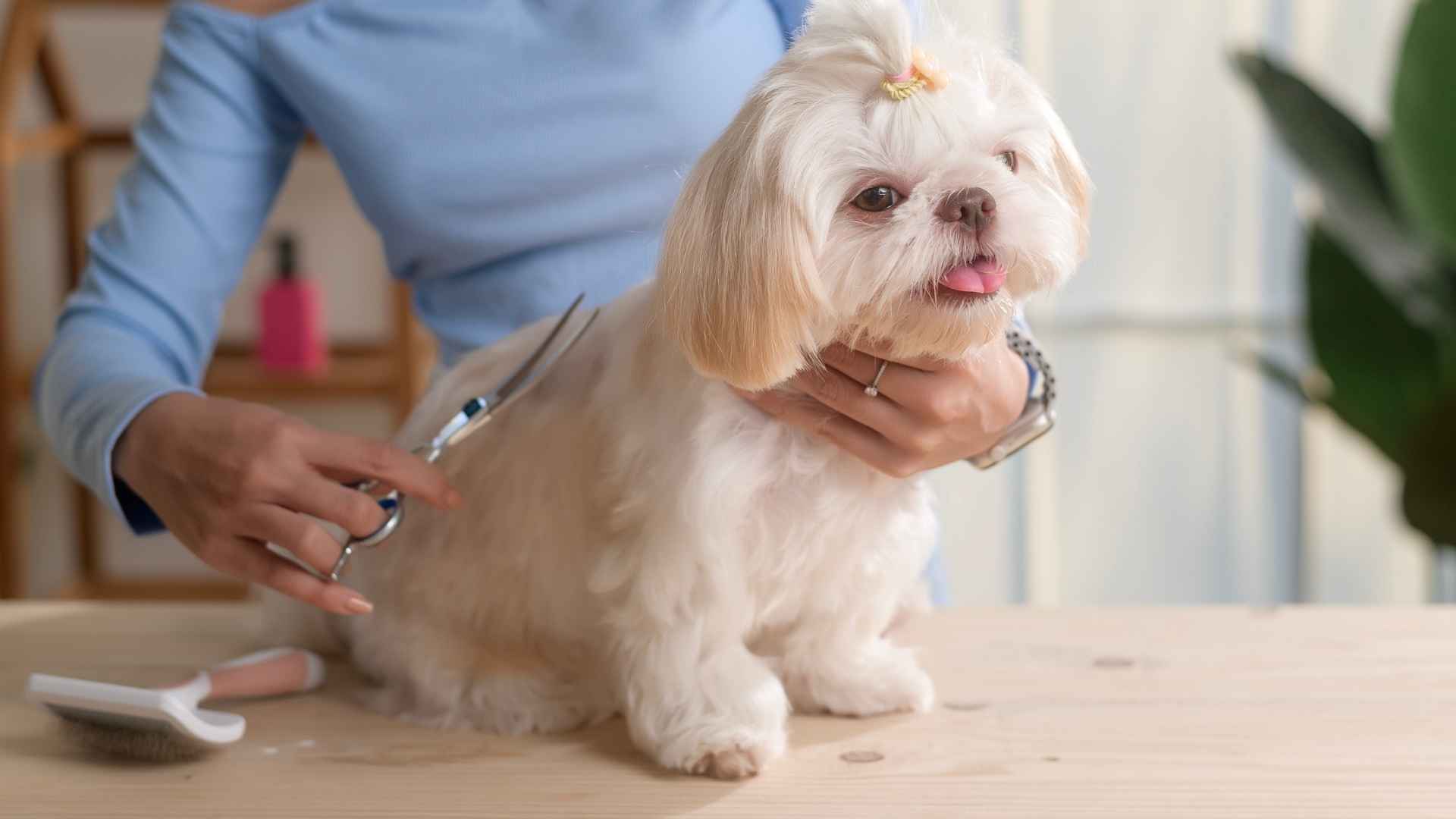Some breeds look like a showstopper every day. But they demand serious grooming—think daily brushing, regular trims, and the occasional spa-like treatment. If you love the idea of a dog with a flawless coat but aren’t afraid of extra effort, high-maintenance grooming for certain breeds might be right up your alley.
These fluffy, fabulous pups don’t just wake up looking perfect. Their coats can tangle, mat, or trap dirt if not properly cared for. From silky strands to dense curls, each type of fur comes with its own set of challenges. But with the right routine, their stunning looks and healthy coats are worth it.
Owning a high-grooming-needs dog isn’t just about keeping them pretty—it’s about their coat health, comfort, and well-being. Ready to dive into the world of luxurious coats and dedicated upkeep? Let’s explore the breeds that demand top-tier grooming!
High-Grooming Needs Dog Breeds
1. Komondor

The Komondor, often called the “mop dog,” is unlike any other breed when it comes to grooming. Its long, corded coat doesn’t just grow—it forms thick, rope-like strands that require careful maintenance. You can’t simply brush a Komondor like other dogs; this corded coat breed needs meticulous separation to prevent matting and dirt buildup.
Unlike fluffy-coated breeds that shed, the Komondor’s cords trap loose hair inside, meaning they don’t shed in a traditional sense. But don’t be fooled—this doesn’t mean they’re low-maintenance. Keeping their coat clean requires patience, as dirt, debris, and even small objects can get caught in their dense cords.
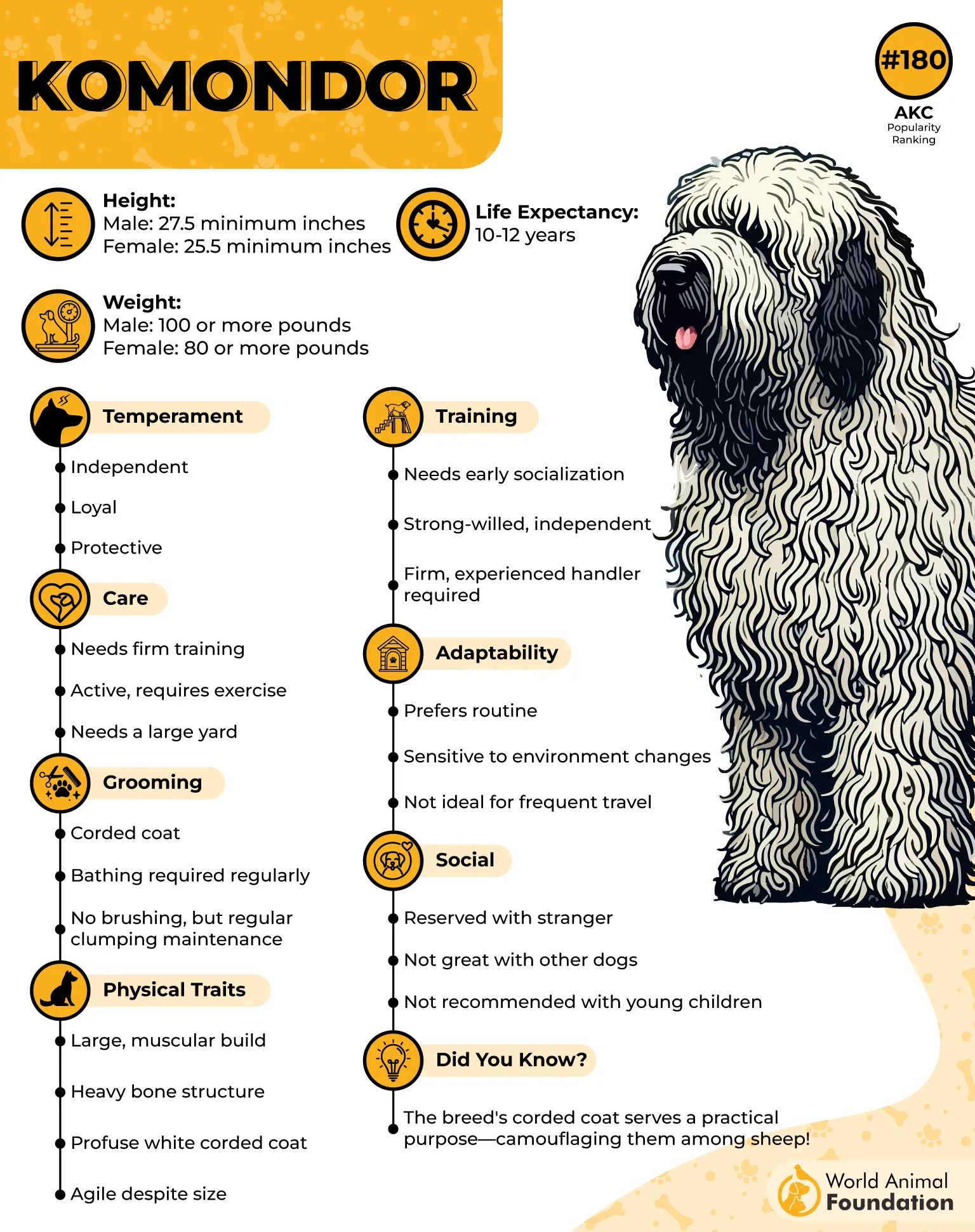
Bathing a Komondor is a full-day event. Because of their dense, rope-like fur, getting them wet is easy, but drying them is the real challenge. Their thick cords can take 24 to 48 hours to dry fully, making it necessary for high-powered dryers and sunny weather.
Puppy Komondors are large and powerful dogs, states Purina. They start with soft, fluffy coats that eventually become their signature cords. This transformation doesn’t happen overnight—it takes about two years for their fur to fully cord. During this phase, owners must manually separate the forming locks to prevent massive tangles.
Komondors should never be shaved, as their unique coat serves a purpose beyond aesthetics. It insulates them in both hot and cold weather; without it, they lose their natural protection. Instead of clipping, owners must focus on keeping the cords clean, separated, and dry—a task requiring serious commitment.
Fun Fact: Did you know a fully grown Komondor can weigh up to 100 pounds yet still move with incredible agility? Despite their bulky appearance, they’re surprisingly fast when guarding their territory!
2. Puli

Puli is a dog that looks like a walking bundle of dreadlocks. A high-energy herding breed wrapped in naturally forming cords. Unlike other long-haired dogs, the Puli’s coat doesn’t just grow—it twists into tight, woolly cords that need careful maintenance. Their coat requires regular brushing and meticulous separation by hand to prevent matting and clumping.
Puli may be smaller than the Komondor, but their grooming needs are as intense. Their cords don’t shed, but that doesn’t mean they’re mess-free. Dirt, leaves, and even small twigs can get tangled in their fur, making regular inspections necessary.
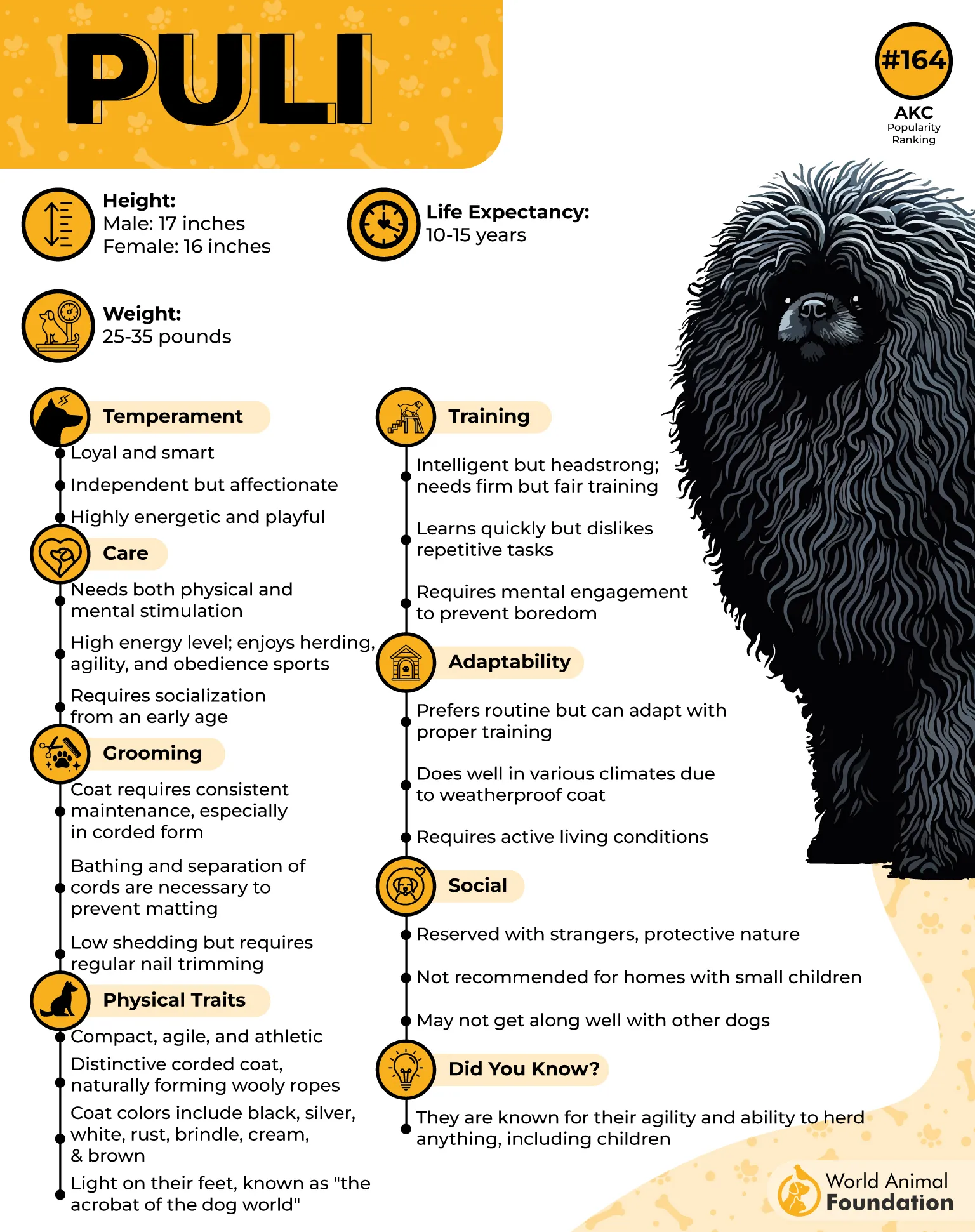
Unlike many other breeds, the Puli’s coat takes years to develop fully. As puppies, they start off fluffy and soft, but by 12 to 18 months, their hair begins to cord naturally. However, this process doesn’t happen smoothly on its own—owners must actively separate the forming cords to ensure they develop properly.
One of the most challenging parts of owning a Puli is maintaining their coat’s hygiene. Moisture can get trapped between the cords, creating the perfect environment for bacteria or fungi. That’s why checking their skin regularly is just as important as keeping their fur clean.
Puli aren’t just about looks—they’re incredibly intelligent, self-confident, and energetic, says Hill’s Pet. Originally bred for herding in Hungary, they require plenty of mental stimulation and exercise. If you want a dog that’s both high-maintenance in grooming and high-energy in personality, the Puli is a perfect (yet demanding) choice.
3. Afghan Hound
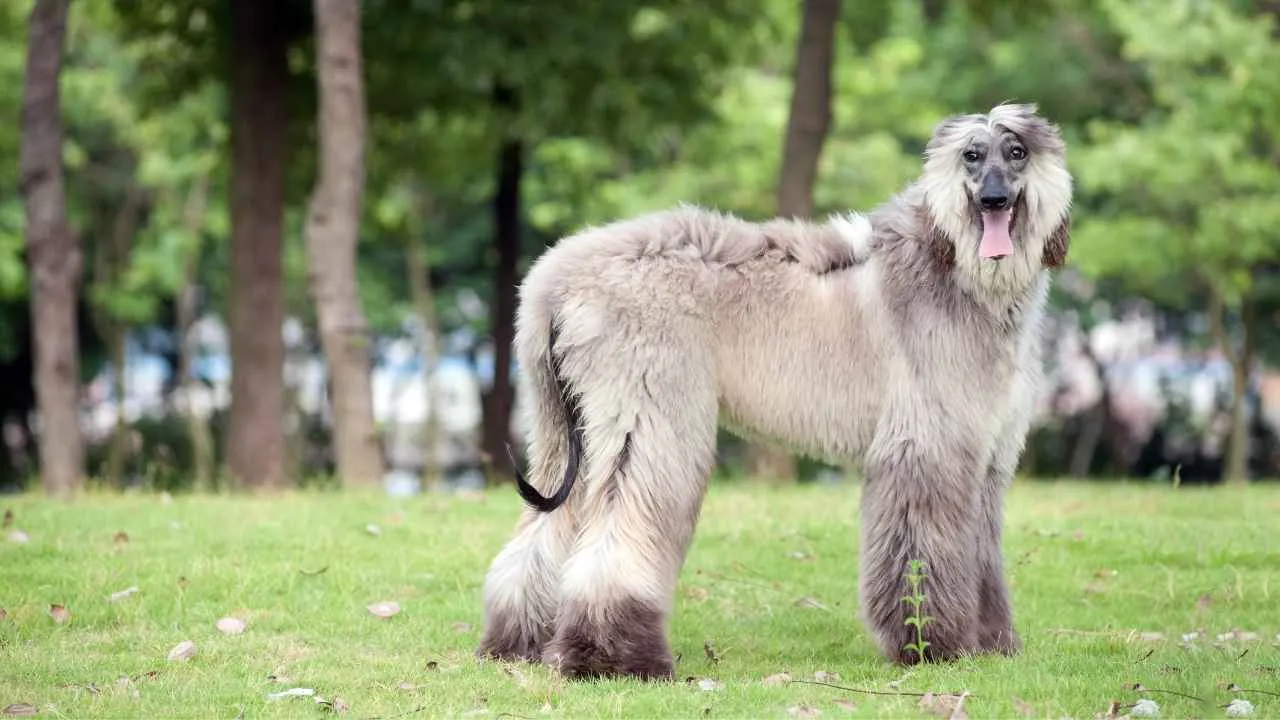
The Afghan Hound defines canine elegance with its long, silky coat that flows like fine silk. But maintaining that stunning look? That’s where the challenge begins. Their hair isn’t just long—it’s delicate and prone to tangles, requiring daily brushing to keep it sleek and mat-free.
Unlike corded breeds, Afghan Hounds have a straight, fine coat that shows every little imperfection. A missed grooming session can result in knots and tangles that take hours to detangle. Plus, their fur is naturally soft, which attracts dust, dirt, and even static electricity, making regular baths necessary.
One of the biggest struggles Afghan Hound owners face is dealing with shedding. While they don’t shed excessively like some double-coated breeds, their long hairs can still be found on furniture, clothing, and even floating through the air. Regular brushing helps minimize this, but expect to find strands of their fine fur in places you never imagined.
Afghan Hounds are high-maintenance beyond just grooming. Their long ears are prone to infections and require regular cleaning. Their fur-covered feet need frequent trimming to prevent dirt buildup. Even their facial hair needs occasional attention to keep it clean, especially after meals.
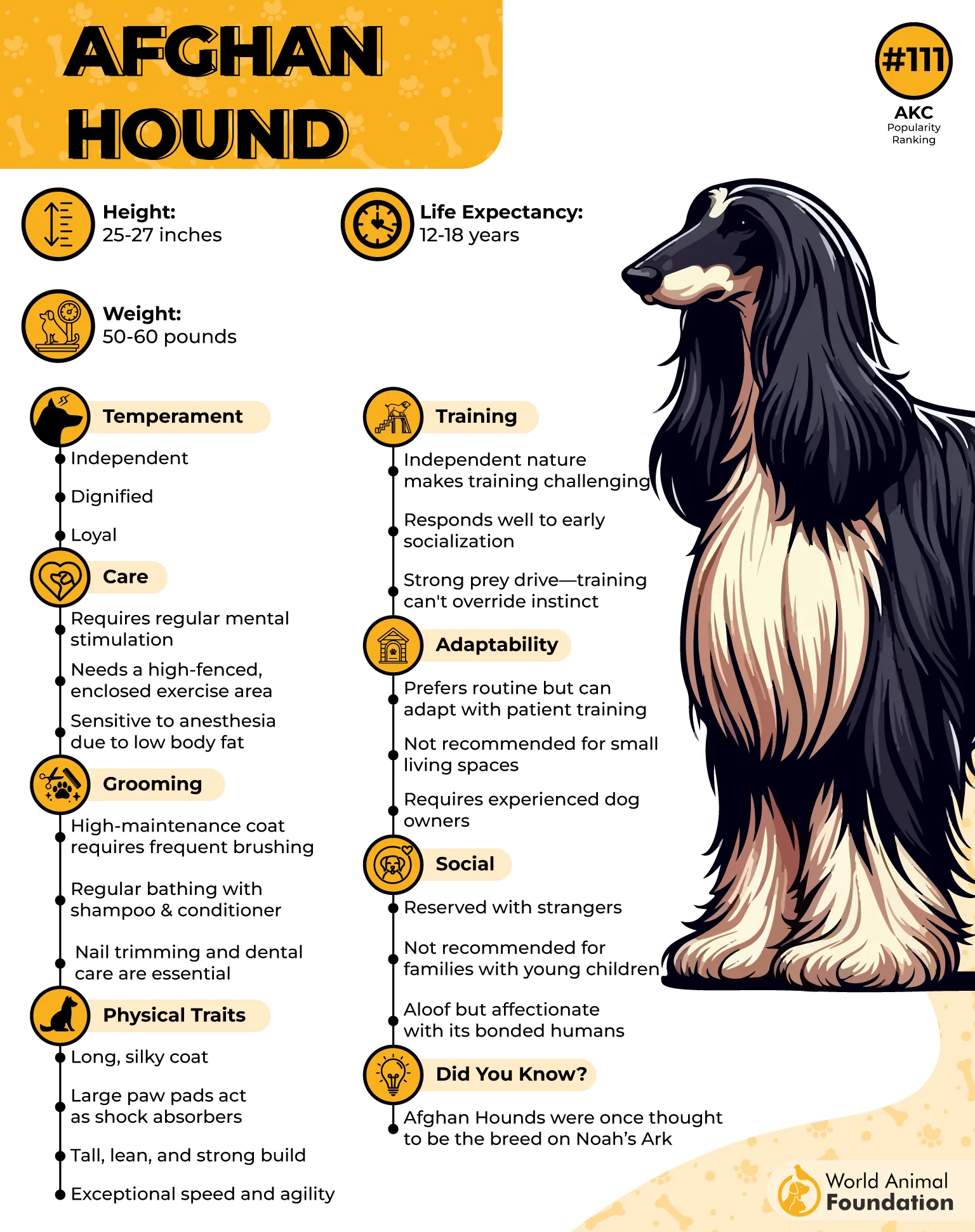
Afghan Hounds are incredibly athletic and independent-minded, says Royal Canin. Bred for hunting in the mountains of Afghanistan, they have impressive speed and endurance. But don’t be fooled by their royal demeanor—under all that silky fur, they’re fast, tough, strong, and always ready to chase something that moves.
4. Bichon Frise

This breed is famous for its lively personality and soft, curly coat that stays fluffy only with constant upkeep. While they may look effortlessly adorable, their grooming routine is anything but easy. Without regular care, their signature white fur can become matted, stained, and lose its cloud-like volume. If you love a low-maintenance pet, this breed will keep you on your toes!
The Bichon Frise’s tightly curled coat traps dirt and debris more easily. This means frequent brushing—ideally every day—to prevent tangles and keep their fur looking pristine. Skipping a few sessions? Be prepared for knots that are almost impossible to remove without professional help.
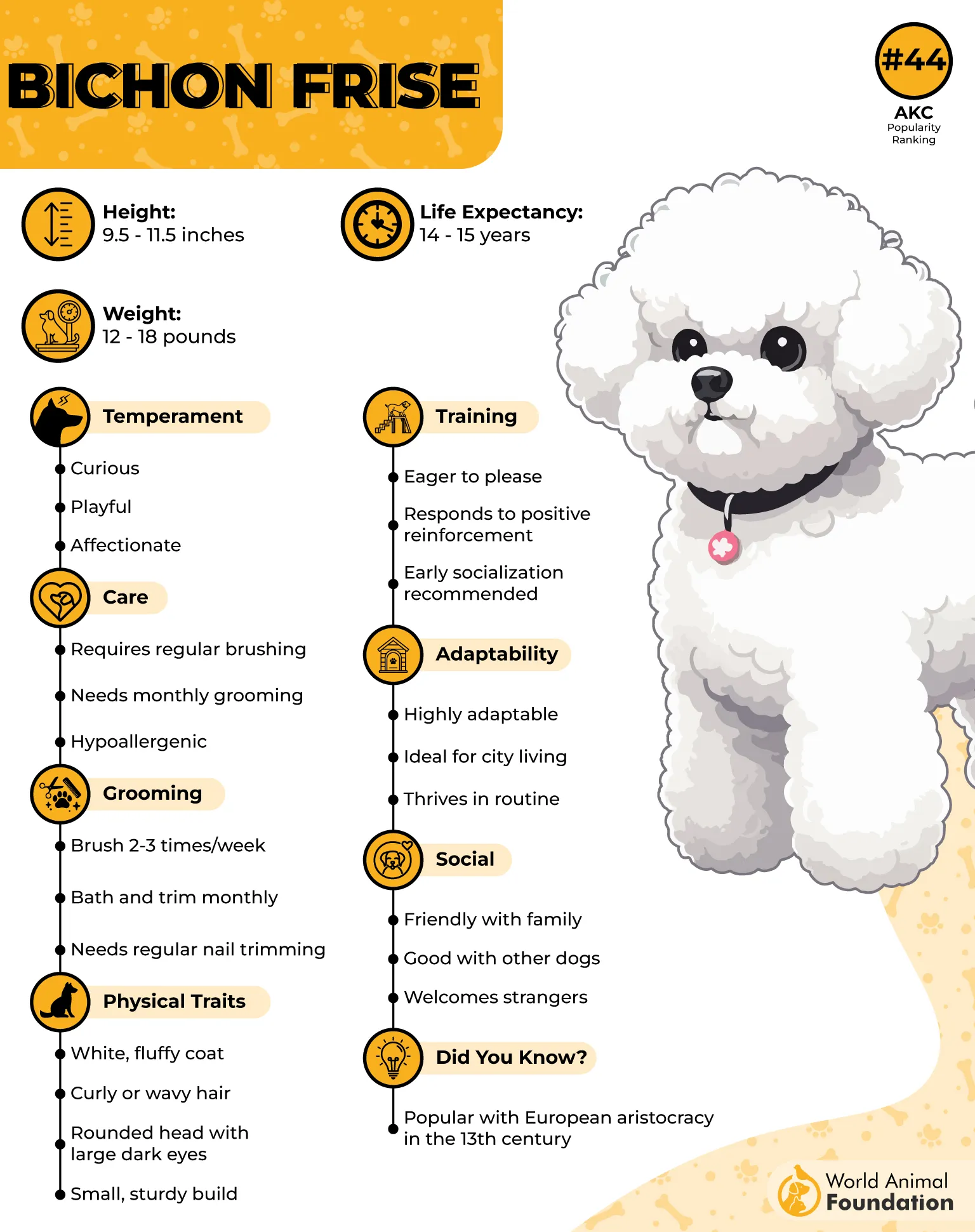
One of the biggest challenges? Tear stains. Those reddish-brown streaks under their eyes can signal allergies or eye irritation. Keeping their face clean requires daily wiping and special tear stain removers. And because their fur is naturally white, even food and water can cause discoloration, meaning owners need to be extra mindful of their grooming habits.
Bathing a Bichon isn’t a quick rinse-and-go job. Petplan states that they have curly coat that needs gentle, whitening shampoos to keep them bright and vibrant. And drying? That’s where the real work starts. Air-drying leaves their curls flat and unkempt, so blow-drying while fluffing their fur is necessary to maintain their round, cloud-like shape.
Trimming thick coats is another essential part of their upkeep. Unlike some breeds that can go months between haircuts, the Bichon Frise needs a trim every 4-6 weeks to keep its fur at the perfect length. Professional grooming is highly recommended because shaping their coat requires skill—one wrong cut, and their signature “teddy bear” look is gone.
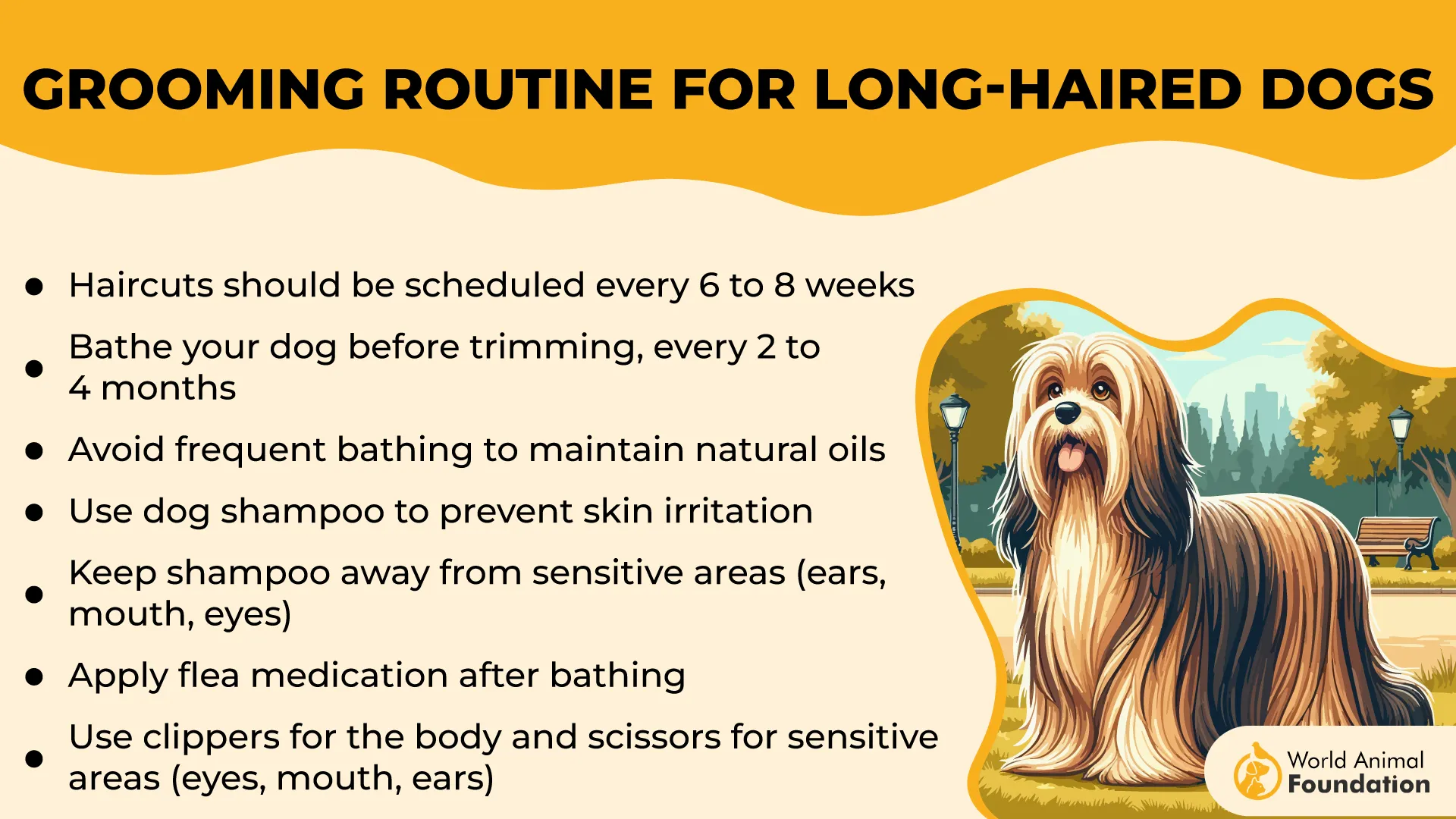
Fun Fact: Did you know that Bichon Frises were once royal lapdogs in the French court? Their luxurious coat and charming personality made them favorites among the nobility, and they still carry that regal attitude today!
5. Poodle

Originally bred as water retrievers, their dense fur provided insulation, but in today’s world, it means endless grooming responsibilities. If you’re not ready for frequent brushing, trimming, and styling, this brainy beauty might not be the best fit!
One of the biggest grooming challenges with Poodles is that their coat never stops growing. Unlike shedding breeds, Poodles have hair similar to humans—it keeps growing until it’s trimmed. Without regular brushing, their curls tangle into dense mats that are painful to remove. Missing a few days of regular grooming? You might find yourself dealing with tight knots.
Their ears also demand extra care. Poodles are prone to ear infections due to hair growth inside their ear canals. Groomers often pluck or trim this fur to improve airflow and reduce moisture buildup. Skipping this step? You might end up dealing with recurring ear issues that require vet visits.
Even their paws require attention! Poodles often grow thick fur between their paw pads, which can trap dirt and debris. If left untrimmed, it can lead to discomfort or slipping on smooth surfaces. And let’s not forget nail trims—long nails can affect their posture and gait, so keeping them short is crucial for overall health.
Despite their high grooming needs, Poodles are one of the most intelligent dog breeds, according to the AKC. They’re quick learners, eager to please, and excel in everything from obedience training to agility sports. But a neglected coat can quickly turn their elegant look into a high-maintenance mess.
6. Siberian Husky

A dog that is wolf-like but acts like a playful, mischievous best friend is a Siberian Husky. This breed is known for its thick, luxurious double coat that keeps it warm in freezing temperatures. But here’s the catch—this luxurious fur doesn’t take care of itself. You might want to think twice if you’re not ready for intense shedding, constant brushing, and fur-covered furniture!
PetMD states that Huskies have a straight, thick double coat designed to insulate them in extreme cold. While it’s perfect for harsh winters, it also means they blow their coat twice a year—a polite way of saying they shed like crazy. During these periods, their undercoat falls out in huge clumps, covering your home, clothes, and pretty much everything you own.
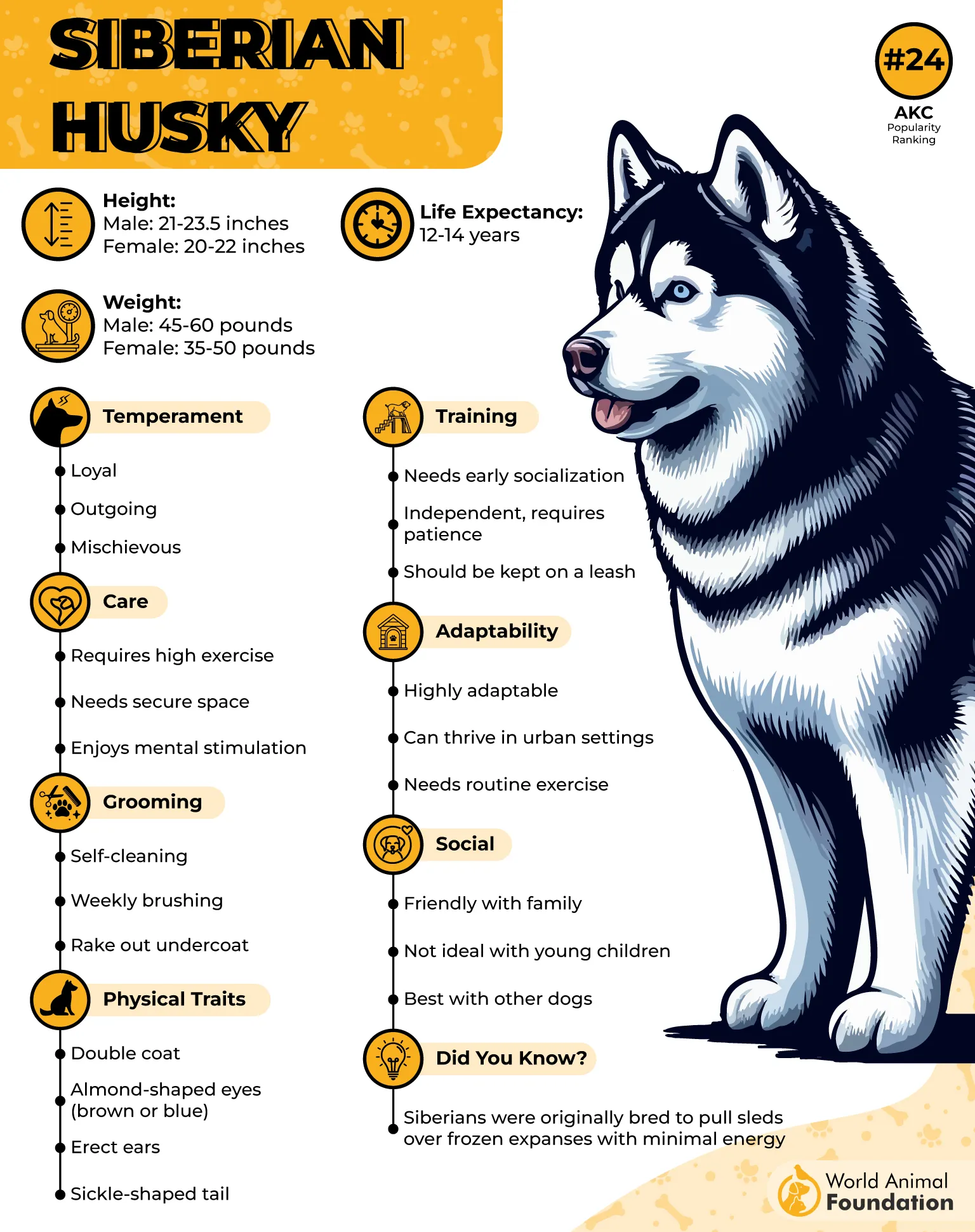
Surprisingly, Huskies don’t need frequent baths. Their coat naturally repels dirt and odors, so bathing them too often strips essential oils and causes dryness. When they do need a wash, a high-velocity dryer is crucial to blow out trapped moisture—otherwise, their thick fur can take forever to dry.
One thing that makes Husky grooming even trickier? They HATE staying still. While some breeds love being pampered, Huskies are known for their impatient, independent nature. They’ll whine, wiggle, and try to escape when you bring out the brush.
Despite their high-maintenance coat, Huskies are low-maintenance when it comes to odor and drooling. They don’t have the typical “dog smell” and rarely drool, making them cleaner than many other breeds. But don’t let that fool you—owning a Husky means signing up for year-round fur battles!
7. Cocker Spaniel

Who can resist the long, flowing ears and soulful eyes of a Cocker Spaniel? This breed is as charming as they come, but don’t be fooled by their adorable looks—their silky coat is a full-time job! If you think a quick brush once a week will do the trick, think again.
One of the biggest challenges? Their fine, feathered fur. Unlike short-haired breeds, Cocker Spaniels have a combination coat—silky on the ears and chest, but on the body, the silky fur can be straight or wavy, says Orvis. This means they are prone to tangles, mats, and dirt buildup, especially around the legs and belly.
Speaking of brushing, daily grooming is essential. Their fur acts like a magnet for twigs, burrs, and debris, especially if they love running through grass or wooded areas. Ever tried getting tiny knots out of delicate fur? Without frequent brushing, your Cocker Spaniel’s coat can become a mess of mats in no time.
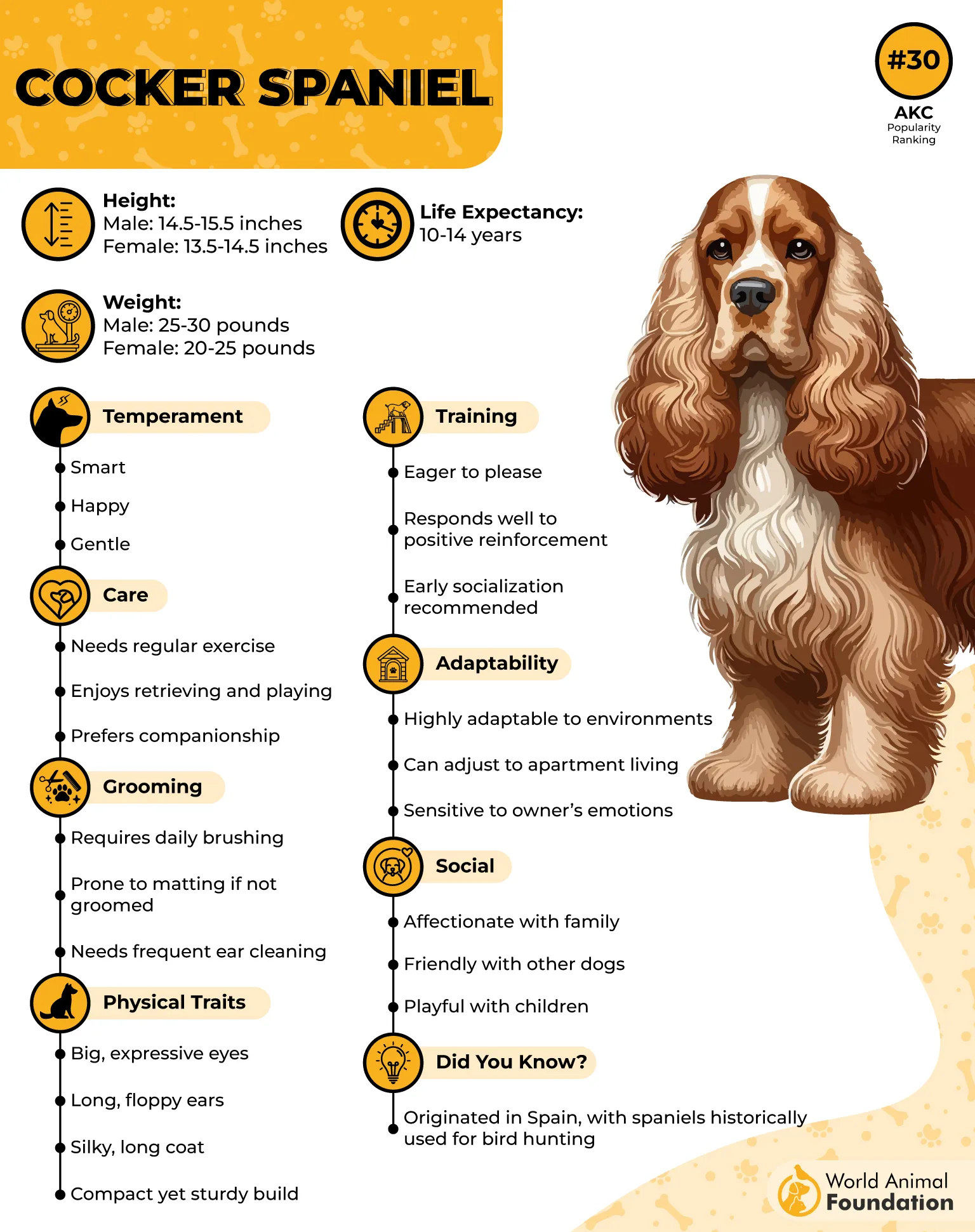
And then there are those iconic long ears. While they might be one of the breed’s most charming features, they’re also one of the biggest grooming challenges. Their ears tend to drag through food, water, and even dirt, making them prone to bacterial buildup, infections, and nasty odors. Regular ear cleaning is an absolute must, or you might find yourself dealing with constant ear issues.
Don’t forget their paws and nails! Cockers grow feathery fur between their toes, which can trap dirt and make them slip on smooth surfaces. If left untrimmed, it can lead to irritation or infections. Their nails also grow fast, and since they’re an active breed, long nails can affect their movement and posture.
Fun Fact: Did you know Cocker Spaniels were originally bred as hunting dogs? Their long ears help funnel scents toward their nose, making them incredible scent trackers!
Conclusion
Some dog breeds require frequent grooming to maintain a healthy coat and prevent tangles or matting. Long-haired dogs, such as the Afghan Hound, Shih Tzu, Yorkshire Terrier, and Lhasa Apso, have silky coats that demand daily or weekly brushing and routine grooming to keep their coat shiny and free from dead hair. Double-coated breeds, including the Siberian Husky and Old English Sheepdog, have a dense undercoat that requires weekly brushing to remove loose fur and prevent skin disorders.
Cocker Spaniels, Cavalier King Charles Spaniels, and Bichon Frises are high-maintenance breeds with feathered ears and curly coats, necessitating regular trims, ear cleaning, and occasional baths to maintain their well-being. Many high-maintenance dogs, such as the Portuguese Water Dog and Komondor, require professional grooming sessions to keep their corded coats in good shape. Extensive grooming is necessary for double-coated dogs to ensure their coat health remains optimal.
Regular grooming enhances the dog’s coat and helps prevent dental and other skin-related problems. For active dogs, maintaining a consistent grooming routine is essential to avoid coat damage and to keep them comfortable. Regular bathing and proper care contribute to a well-groomed show dog’s skin, enhancing their friendly companion appeal.


